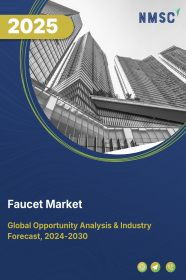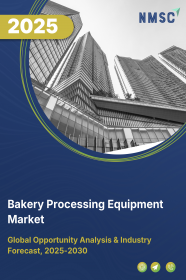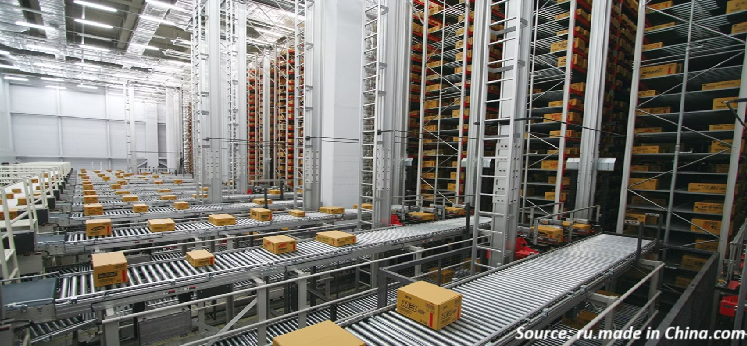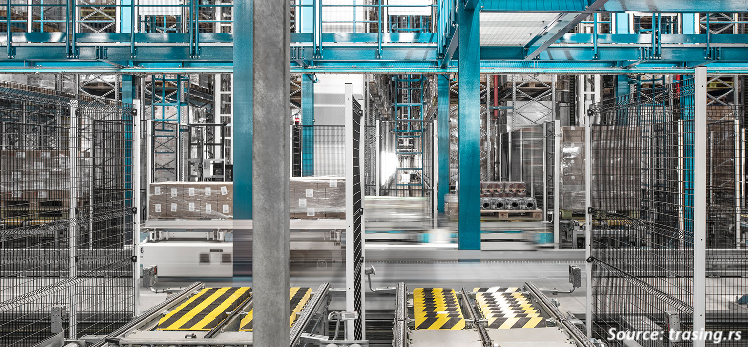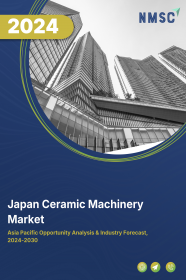
Japan Ceramic Machinery Market by Type (Shaping Machines, Decorative and Glazing Machines, Kilns and Firing Machines, Raw Material Processing Machines, Storage and Handling Machines, and Others Machinery), by Product Type (Tile, Sanitary Ware, Tableware, Technical Ceramics, Refractories, and Abrasive), and by End User (Construction, Automotive, Electronics, and Others) – Global Opportunity Analysis and Industry Forecast, 2024–2030
Industry: Construction & Manufacturing | Publish Date: 17-Oct-2024 | No of Pages: 79 | No. of Tables: 49 | No. of Figures: 34 | Format: PDF | Report Code : CM2801
Japan Ceramic Machinery Market Overview
The Japan Ceramic Machinery Market size was valued at USD 135.6 million in 2023, and is predicted to reach USD 223.3 million by 2030, at a CAGR of 6.9% from 2024 to 2030.
The ceramic machinery market, also known as the ceramic manufacturing equipment market, involves the global industry that designs, produces, and distributes machinery for making ceramic products such as tiles, sanitary ware, tableware, and advanced ceramics.
This market includes equipment like crushers, grinding mills, kilns, dryers, and presses, used throughout the ceramic production process, from raw material preparation to the final product. Ceramic manufacturing equipment offers high precision for shaping, glazing, and producing ceramics, resulting in consistent product quality, faster production, and lower labor costs. It is essential for meeting the growing need for quality ceramics, supported by advancements in manufacturing technology and increased automation investments.
Collaborative Efforts among Key Players Drive Advancements in Ceramic Machinery
The growth of the ceramic machinery market is significantly propelled by collaborative efforts among key players, pooling resources, expertise, and innovation. These partnerships foster the development of cutting-edge technologies, such as 3D printing, which enhance production efficiency and improve product quality. For example, in February 2024, Lithoz teamed up with AS ONE, Mitsui Kinzoku, and Yugōkuen Ceramics to advance ceramic 3D printing technology in Japan.
This collaboration aimed to utilize Lithoz's Lithography-based Ceramic Manufacturing (LCM) technology, creating a robust technology network and boosting the country's ceramic manufacturing capabilities. Such collaborations establish shared technology hubs that accelerate the adoption of advanced ceramic machinery for shaping and manufacturing materials, thereby driving the Japan ceramic machinery market expansion.
Electronics Industry Growth Enhances Demand for Ceramic Machinery
The expansion of the electronics industry further stimulates the demand for ceramic machinery due to the increased need for advanced ceramic tiles in electronic components. Electronics manufacturers require specialized ceramics for producing smaller, more efficient, and high-performance devices, including capacitors, insulators, substrates, and piezoelectric elements.
This demand necessitates sophisticated ceramic manufacturing equipment capable of producing high-precision and high-quality ceramics to meet stringent electronic specifications. According to the World Economic Forum, the Japanese government allocated approximately USD 13 billion in 2023 to bolster its domestic semiconductor production system, a significant rise from USD 8.6 billion the previous year.
This increased investment in electronics drives the growth of ceramic manufacturing equipment needed to produce high-precision ceramic components for various electronic devices.
High Initial Investment Hindering Growth of the Ceramic Machinery Market
A significant challenge for the ceramic machinery market is the high initial investment needed for advanced equipment. This substantial financial requirement creates a major barrier, particularly for smaller companies and startups, hindering their ability to invest in the latest technologies.
The large capital needed to purchase and install sophisticated machinery limits these businesses from upgrading their operations or expanding their capabilities. As a result, this financial constraint impedes overall market growth by restricting many manufacturers from adopting new, more efficient production technologies that could advance the industry.
Integration of Inkjet Technology in Ceramic Machinery Creates Future Opportunities
The integration of inkjet technology offers a valuable opportunity for Japan ceramic machinery market growth. This technology allows for high-resolution, customizable printing directly on ceramic surfaces, creating intricate designs, vibrant colors, and detailed patterns. It meets the increasing demand for personalized and aesthetically appealing ceramics.
Additionally, inkjet technology improves production efficiency by reducing reliance on traditional, labor-intensive methods, thus lowering costs and enhancing manufacturing processes. This advancement not only provides a competitive edge but also opens up new growth opportunities within the ceramic machinery sector, making it a key investment for future development and innovation.
Competitive Landscape
Several key market players operating in the Japan ceramic machinery industry include Yugyokuen Ceramics Co., Ltd., Coesia, KEDA Industrial Group Co., Ltd., Baotao Machinery, Yongtao Machinery, and others.
Japan Ceramic Machinery Market Key Segments
By Type
-
Shaping Machines
-
Decorative and Glazing Machines
-
Kilns and Firing Machines
-
Raw Material Processing Machines
-
Storage and Handling Machines
-
Others Machinery
By Product Type
-
Tile
-
Sanitary Ware
-
Tableware
-
Technical Ceramics
-
Refractories
-
Abrasive
By End User
-
Construction
-
Automotive
-
Electronics
-
Others
Key Players
-
Yugyokuen Ceramics Co., Ltd.
-
Coesia
-
KEDA Industrial Group Co., Ltd.
-
Baotao Machinery
-
Yongtao Machinery
-
Others
REPORT SCOPE AND SEGMENTATION:
|
Parameters |
Details |
|
Market Size in 2023 |
USD 135.6 Million |
|
Revenue Forecast in 2030 |
USD 223.3 Million |
|
Growth Rate |
CAGR of 6.9% from 2024 to 2030 |
|
Analysis Period |
2023–2030 |
|
Base Year Considered |
2023 |
|
Forecast Period |
2024–2030 |
|
Market Size Estimation |
Million (USD) |
|
Growth Factors |
|
|
Companies Profiled |
10 |
|
Market Share |
Available for 10 companies |
|
Customization Scope |
Free customization (equivalent up to 80 working hours of analysts) after purchase. Addition or alteration to country, regional, and segment scope. |
|
Pricing and Purchase Options |
Avail customized purchase options to meet your exact research needs. |

















 Speak to Our Analyst
Speak to Our Analyst



